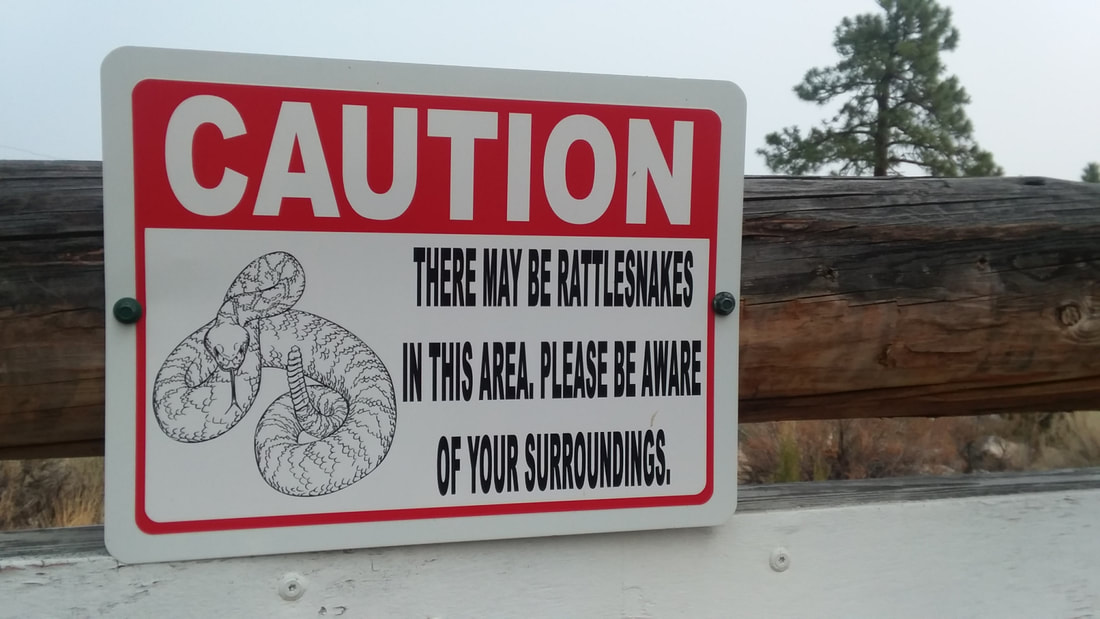The victim said there was no warning rattle. "I saw a snake head come up and strike me in my left calf. My natural reaction was to jump back, and I bent over and pulled up my pant leg to see if he actually penetrated my long pants. I saw two bite marks about two inches apart. As soon as I stood up, I could actually taste the poison in the back of my throat."
Slowly and methodically, Scott started walking up the mountain, which was a pretty steep climb. He had only gone about a quarter of a mile when he lost his balance. He started crawling. And then he was throwing up about every 15 minutes. Then he started to go in and out of consciousness. "My dog stayed with me the whole time. He never left my side. He would paw at me and lick me in the face to keep me awake." About two hours after being bit, he fired a shot from the pistol into the air to get attention. No one was around to hear it. Back at home, his wife had a gnawing feeling something was amiss when Scott didn’t show up as planned. She found her husband’s truck at the trailhead, and about an hour later a rescue attempt was underway. Coincidentally, at the same time, Scott said he had pretty much given in to the notion he wasn't going to make it out alive. So he made a goodbye video to his family with his phone. “I couldn't talk clearly because my throat was so swollen." As it started to get dark, the delirious Scott saw a black blur moving his way and feared it a bear was coming to finish the rattlesnake's job. Luckily, it was the rescue team. A helicopter couldn't be used because of the thick canopy. Scott was too far gone to be slowly carried out. So he was moved by motorcycle, strapped to a driver and held up by paramedics walking on either side. That took three hours. More than 11 hours after he first got bit, he made it to the hospital, but he had already gone into cardiac arrest. Doctors gave him less than a 5% chance to survive. His rescue was one miracle, and his second was the dozen antivenom treatments and other medical interventions that saved his life. He was in a coma for three days but pulled through. "It took me a total of about three months to fully recover enough to where I could actually walk and have the energy to get around,” he says. Scott later learned it was a timber rattlesnake that bit him and that it directly hit a vein, which made the venom spread more rapidly, but also spared him from tissue damage. What to do if a rattlesnake bites you If you are bitten, you need to seek medical attention as quickly as possible say the experts. If you can, call EMS to come get you. You'll know if you have a serious bite in just a couple of minutes; you can start to feel tingling in your face. According to the California Poison Control System, other symptoms could include:
But what if you can't make that SOS call?
What NOT to do if a rattlesnake bites you
How to avoid a snake bite Rattlesnakes are most active in spring and fall, but vigilance is important all year. Snakes really can venture out in winter on a sunny day. Always be careful where you put your hands and your feet, especially when working around woodpiles or clearing brush. Wear thick gloves. If you're reaching under your house, shine a light under there. first to make sure the coast is clear. In addition:
Comments are closed.
|
RAZER GAITERS

 RSS Feed
RSS Feed
